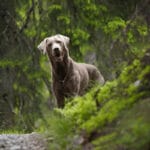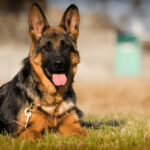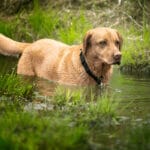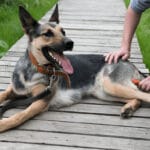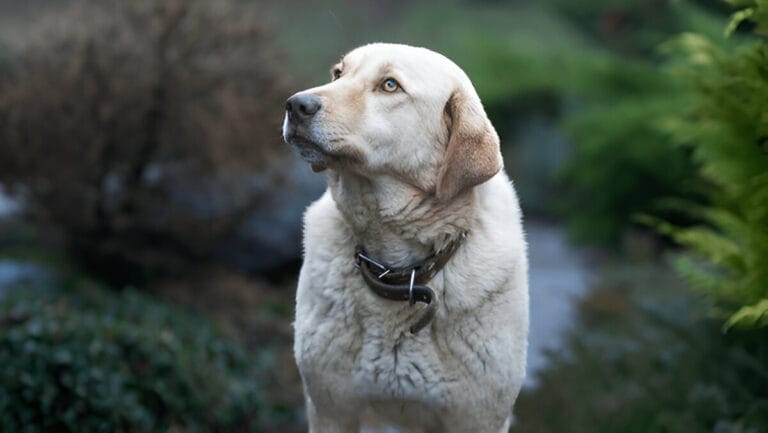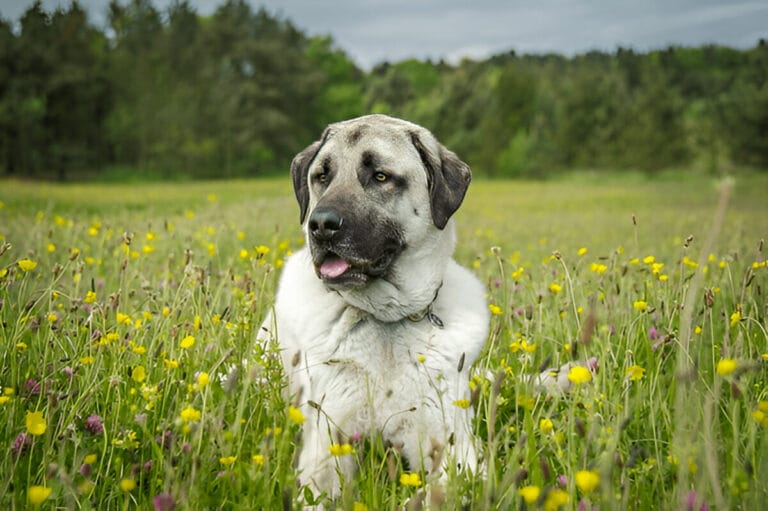German Shepherd: The Ultimate Working Companion
Having spent years observing and training various dog breeds, I can confidently say that German Shepherd dogs are among the most popular breeds globally.
These remarkable canines are valued for their exceptional intelligence, unwavering loyalty, and impressive athleticism that makes them truly special. With their large, muscular frame featuring distinctive brown and black markings, these dogs possess a streamlined build that’s both strong and agile.
What strikes me most about this breed is how they’re excellent at herding – a trait that makes them well suited for work as service animals. You’ll often see them serving as guide dogs for the visually impaired, where they serve alongside police officers and members of the military with remarkable dedication.
From my experience working with these incredible animals, I’ve witnessed their transformation from guard dogs to movie stars, proving they’re undoubtedly the most versatile canines you’ll encounter.
However, potential owners need to understand that you must give them enough ways to expend their energy and smarts – something I always think about when advising new owners to keep learning and read about their needs.
These highly intelligent and loyal creatures possess attributes that make them one of the most sought-after dog breeds in the U.S. As part of the group of high-energy breeds, they absolutely love having a job and require an outlet for regular exercise.
They’re known for their confidence and bravery, with an remarkable ability to thrive under expert levels of training and obedience work. In fact, they’re commonly used in working roles including patrolling, bomb sniffing, and search and rescue operations where their skills truly shine.
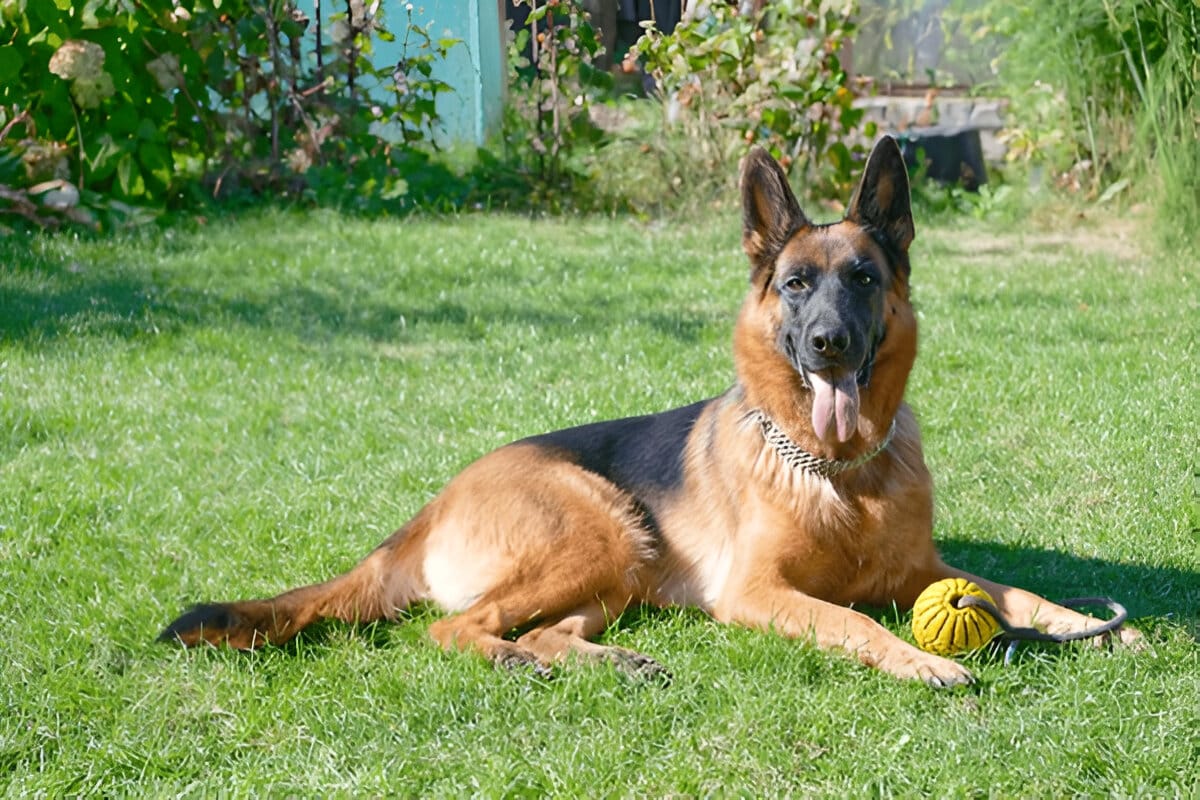
Photo credit: Shutterstock by Yuri Shirokov
Characteristics of the German Shepherd
From my years of working with various breeds, I’ve observed that German shepherds are naturally protective and incredibly loyal companions who were bred with a strong work ethic that makes them one of the most popular dog breeds in the United States. Ranking No. 4 in 2022, thanks in large part to their ability to be great family dogs who love their people deeply while remaining cautious around strangers and newcomers.
These remarkable canines thrive when given proper care and attention, earning their position as the 1 Shepherd Dog according to American Kennel Club.
However, this breed isn’t the right choice for everyone – they rarely do well staying home alone and cannot live very comfortably in small spaces without access to a yard. If you simply don’t have a lot of time to devote to your pet, a shepherd needs constant companionship to help ward off destructive and annoying behaviors that can rise out of anxiety and boredom.
While most pets are content with basic care, many of these hard-working canines excel at various jobs where they serve humans, including search-and-rescue, police work, drug detection, bomb-sniffing, service roles, and entertainment.
Their Affection Level rates High, though their Friendliness toward strangers stays at Medium, and they’re generally Kid-Friendly but Pet-Friendly levels remain Low with other animals. What truly sets them apart is their Exercise Needs and Playfulness – both requiring significant Energy output daily, combined with exceptional Trainability and Intelligence that makes training both rewarding and essential.
Potential owners should also consider their Tendency to Bark and the significant Amount of Shedding they produce year-round, factors that require dedicated management and patience from committed families.
History of the German Shepherd
The German Shepherd breed origins trace back to the late 19th century, particularly through the visionary efforts of Captain Max von Stephanitz, a former officer in the cavalry who harbored a distinct ambition to cultivate an unparalleled herding dog.
In the preceding centuries, farmers and their European counterparts had relied on various dogs to manage and safeguard their livestock, with certain canines having gained legendary status for their prowess.
This prompting shepherds to traverse great distances just to mate their female dogs with these distinguished sires. However, Stephanitz astutely observed that while these local breeds were excellent, they had yet to evolve into a unified standard.
In 1898, upon retiring from his military career, he embarked on a new chapter dedicated to his passion for experimenting with breeding techniques to fashion something exceptional.
Drawing inspiration from British breeding methods that were renowned at the time, he studied various techniques and traversed Germany attending dog shows while closely observing German-style breeding practices.
Amidst these fine examples he encountered, he found dogs that were athletic, intelligent, and capable, but he found a crucial element was lacking – no single breed encapsulated all the traits he envisioned.
His 1899 journey brought him to a dog show where he became captivated by a wolf-like canine named Hektor Linksrhein, swiftly acquiring and renaming him Horand v Grafeth. Stephanitz was profoundly impressed by the dog’s robust physique and sharp intellect, and this encounter motivated him to establish the Verein für deutsche Schäferhunde (Society for the German Shepherd Dog) to lay the foundation for the breed.
Using Horand’s descendants as breeding stock, while these dogs were initially intended to excel at herding, industrialization led Stephanitz to envision a different path for the breed.
Recognizing the diminishing need for herding dogs, he pivoted toward emphasizing their suitability for police work. Leveraging his military connections, he secured government endorsement for their capabilities.
During World War I, German Shepherds proved their mettle as Red Cross dogs, messengers, rescuers, guards, and sentinels, which helped them gain significant traction in the United States after the war.
Allied servicemen admired their courage and intelligence, and among them was an American corporal from Los Angeles who rescued a newborn puppy from a war-ravaged kennel in France.
This puppy, Rin Tin Tin, became a cinematic sensation starring in numerous films, propelling the breed’s popularity throughout America.
The aftermath of war introduced challenges as their German roots became stigmatized, leading to changes in nomenclature – the American Kennel Club (AKC) renamed them in 1917, while England called them Alsatian Wolf Dogs.
It wasn’t until much later that the original name was reinstated. Stephanitz remained a steadfast advocate for breed integrity and quality, and by 1922 he recognized unfavorable traits emerging such as poor temperament and dental issues.
He instituted a rigorous control system requiring dogs to pass comprehensive tests before breeding, assessing their athleticism and overall health.
The divergence between German-bred and American lines escalated after World War II, as Americans prioritized appearances and show wins over the functional attributes of their ancestors.
These remarkable shepherd dogs had acted as both servants and companions to humans for hundreds of years before the modern breed was developed. Working on old farm properties, they helped know and manage livestock in ways we still see today.
The breed was first introduced to the world when Capt. von Stephanitz founded his society, and within just 2 decades, worldwide interest began rising in the early 1900s, particularly by 1908.
After both Wars, the word “German” was often dropped and they were referred to by different names, though this practice was often used throughout Europe. Modern breeding has involved cross-breeding including the development of variations like the king shepherd mix and Shiloh shepherd lines.
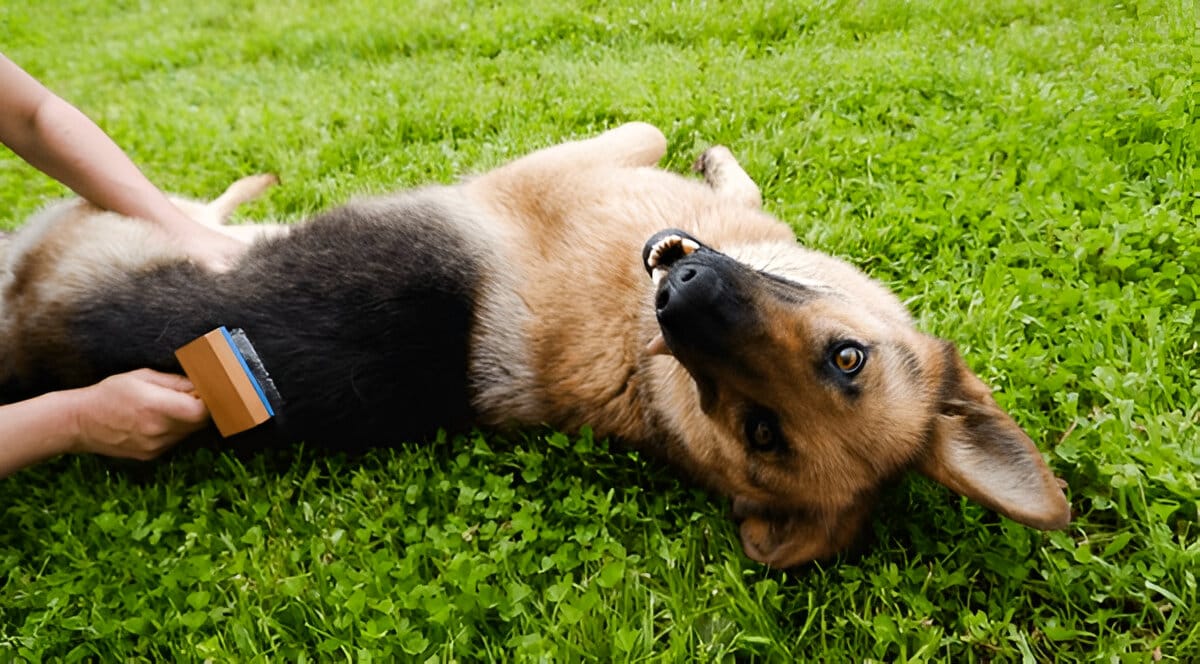
Photo credit: Shutterstock by Fire-n
German Shepherd Care
German shepherd dogs require frequent care, training, and attention, but will reward you with many years of unwavering loyalty and love when properly cared for.
From my experience working with these magnificent canines, they are well suited for families, though they’re best acquired as pets when young so they have ample time to adjust to life with their humans and undergo the necessary socialization that shapes them into balanced companions.
Exercise
German shepherds need plenty of regular exercise because it’s absolutely essential for managing their incredibly high energy levels – I’ve learned this firsthand after years of working with these dogs.
A simple daily walk is simply not enough for most German shepherds, and if you’re a jogger, your shepherd can actually be a fantastic running companion since they naturally have so much energy to burn.
Your dog needs intensive activities to run, play, and explore different environments to prevent serious behavioral issues like frustration, boredom, and dangerous pent-up energy from building up inside them.
When German shepherds become bored, they may quickly resort to destructive behaviors like excessive barking, persistent digging, and aggressive chewing – and trust me, even the most well-behaved shepherds naturally like to chew things with their incredibly powerful jaws, so always keep durable toys available for them.
These magnificent dogs are definitely better off living in a home with a large fenced yard for safe exploration rather than being confined in an apartment setting; however, it’s actually more important that each shepherd receives hours of quality attention and isn’t carelessly left alone for most of the day regardless of living space.
Health
Most German Shepherds are naturally healthy dogs when you work with a responsible breeder who will carefully screen their breeding stock for common health conditions that can affect this breed.
A quality breeder always tests for serious issues such as degenerative myelopathy, elbow and hip dysplasia, which are unfortunately common in this breed – I’ve seen too many beautiful Shepherd Dogs suffer from these inherited conditions when their bloodlines weren’t properly screened.
Beyond genetic issues, German Shepherds can also experience bloat, a sudden and life-threatening swelling of the abdomen that requires immediate veterinary attention and can strike without warning.
All owners should take time to educate themselves about bloat’s dangerous symptoms and exactly what to do if this emergency occur, because quick action can literally save your dog’s life – I always tell new German Shepherd families that understanding these health risks isn’t meant to scare them, but rather to help them become better prepared guardians for their beloved companions.
Grooming
German shepherds have a distinctive coarse and sometimes wiry medium-length hair with an incredibly thick undercoats that requires consistent attention – I’ve learned through years of experience that their coats should be brushed every few days to combat the breed’s relatively high shedding rate, which can actually be lessened by establishing a solid routine grooming schedule.
Even with diligent brushing, you still need to be prepared for finding dog fur on your clothing and furniture, so you’ll need to vacuum frequently to keep your home clean – luckily, the shepherd’s coat also resists dirt and debris, so you won’t need to bathe your companion more than once a month. In fact, too-frequent bathing will strip out the natural oils that keep the coat healthy and protected from the elements, which I always warn new owners about during our grooming consultations.
Don’t forget to keep your dog’s nails trimmed to help them walk around comfortably and maintain good dental hygiene through regular brushing their teeth a couple of times each week – these simple maintenance tasks 1 often gets overlooked but are essential for your German Shepherd’s overall wellbeing.
Training
German shepherds can be very gentle companions and excellent family protectors with proper training and early socialization – they’re truly an ideal breed for active households when their needs are met correctly. The remarkable intelligence and natural protective demeanor of this amazing breed make it a good choice for families with young children, as long as the dog is properly trained from puppyhood, because sometimes these powerful dogs become anxious or even aggressive if not carefully handled during their development.
These dogs will ideally perform any duty you give them and they’ll absolutely take pride in activities such as canine sports that challenge their minds, since the breed’s natural desire to work should make training fairly easy for most owners.
Always make sure your shepherd does not become stressed or scared when meeting new people, unfamiliar animals, or seeing completely different environments – I’ve found through years of working with this breed that additionally, they may have a strong tendency to chase cats and other small pets, so they don’t always fit into a multi-pet household unless everyone is raised together from a very young age.
German shepherds don’t always get along well with strange dogs, especially those of the same sex, which can become a serious problem if you regularly visit the local dog park for exercise and socialization.
German Shepherd Dog Size
The German Shepherd Dog is truly renowned for its striking appearance and genuinely impressive size, making this breed one that falls squarely within the medium to large dog category.
What makes them so captivating is how they’re characterized by their incredibly strong, robust build that exudes both elegance and raw power in every movement – I’ve worked with countless adult Shepherds over the years and they typically possess a height range of 22 to 26 inches (56 to 66 cm) at the shoulders, with males often standing slightly taller than females.
However, these measurements may vary based on several factors such as genetics, family lineage, geographical regions, and specific breeding practices that different kennels follow.
The breed’s weight is equally notable, with most healthy specimens usually weighing between 50 and 90 pounds (23 to 41 kg), with males typically tending to be significantly heavier than their female counterparts.
This substantial mass contributes to their overall substantial, muscular frame, perfectly reflecting their historical role as hardworking herding and working dogs that needed both endurance and strength. Their well-proportioned body structure features a perfectly level back, powerful hindquarters, and a deep chest that further emphasizes their natural agility and incredible strength capabilities.
The Shepherds’ impressive physical presence serves as a direct reflection of their multifaceted nature – while their imposing stature makes them highly capable guardians and reliable protectors, it is important to note that this intimidating appearance is beautifully coupled with remarkable intelligence and an eager-to-please temperament.
This perfect blend of physical prowess and mental acuity positions them as incredibly versatile companions capable of excelling in various roles including search and rescue, police work, service duties, and as beloved family pets.
Maintaining their ideal size and overall health remains crucial for their long-term well-being – regular exercise, a balanced diet, and routine veterinary care all contribute to their longevity and vitality. Additionally, responsible breeding practices play a significant role in upholding breed standards and preventing serious health issues associated with excessive or inadequate size variations.
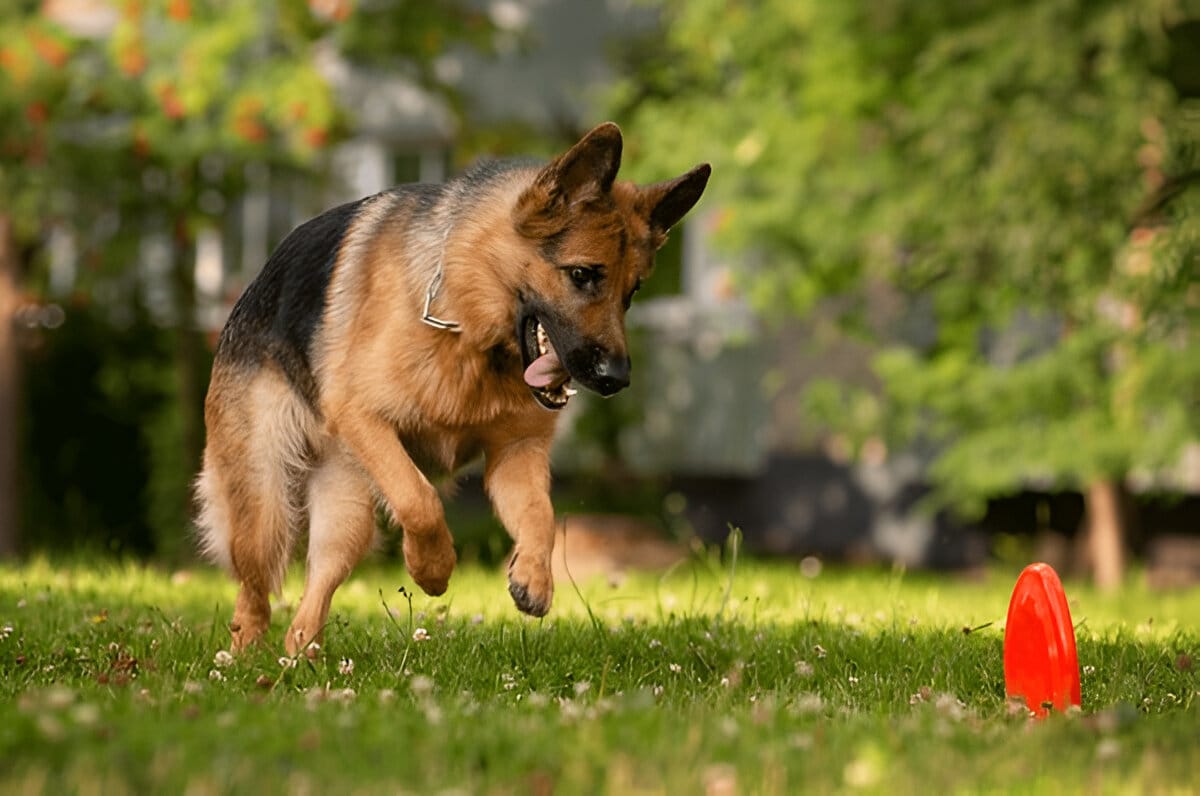
Photo credit: Shutterstock by ANNA TITOVA
German Shepherd Dog Personality
The German Shepherd’s personality is uniquely characterized by a subtle aloofness rather than any overt aggression, making these dogs naturally inclined toward initial reserve when forming connections – not building relationships instantly but creating incredibly deeply rooted bonds once those initial barriers are broken and trust is established.
Through years of working with this breed, I’ve witnessed how their loyalty knows no bounds within the family circle, where they exhibit an affable, genuinely approachable demeanor, yet when faced with real threats, these remarkable animals can transform into unwavering stalwart protectors, showcasing exceptional watchdog abilities that seem to emerge from their very core.
German Shepherds come endowed with truly remarkable intelligence and incredibly trainable instincts, making this breed one that absolutely thrives when given any purposeful task or mental challenge – honestly, no challenge is too great for these versatile working dogs, from alerting a hearing-impaired individual to a doorbell’s chime all the way to locating a victim buried under a devastating avalanche.
The Shepherd dog’s capabilities seem virtually boundless when properly channeled and developed, which is why they excel in so many different professional roles.
However, one aspect that requires careful consideration is their intense need for constant companionship and mental engagement – prolonged periods of solitude do absolutely not align well with their social nature, and without the necessary interaction, adequate exercise and opportunities to properly engage their incredibly sharp minds, these intelligent animals will experience boredom and dangerous restlessness.
When left under-stimulated or completely isolated from meaningful activities, they unfortunately may resort to various undesirable behaviors such as excessive barking and highly destructive chewing that can damage your home and belongings.
In line with all canines, early socialization of your German Shepherd puppy proves pivotal for proper well-rounded development – they absolutely should be exposed to diverse people, different environments, various sounds, and positive encounters during their most important formative stages, which lays the essential foundation for raising an adaptable, emotionally balanced adult dog that comes equipped to handle any variety of situations with genuine confidence and natural ease.
By truly embracing these natural qualities while consistently providing suitable outlets for their boundless energy and superior intellect, your German Shepherd will evolve into an absolutely outstanding companion and reliable guardian, perfectly embodying the best traits this incredible breed has to offer.
Diet and Nutrition
Your adult German shepherd will need two meals each day of up to 2 cups of high-quality dry dog food, but this amount will depend on the dog’s size, activity level, age, and overall health status – I’ve found through years of experience that you may also want to mix some canned food into the kibble for added extra flavor and interest during mealtimes.
German shepherds are unfortunately prone to dangerous bloating and possible stomach torsion, so you’ll want to avoid giving your dog one large meal or having them gulp it down too quickly, which is why splitting their daily portions into smaller servings is absolutely crucial.
Always be sure your dog has constant access to clean, fresh water throughout the day, and carefully monitor their weight to address any overweight issues early, as obesity can seriously shorten their lifespan and lead to joint problems that are already common in this breed.
You can discuss your German shepherd’s specific nutritional needs with your veterinarian to get personalized recommendations for proper feeding schedules and appropriate food types that will support their health throughout their entire life.
German Shepherd Dog Feeding
Tailoring a proper diet for your German Shepherd Dog requires careful consideration of their large size and naturally elevated energy demands – I always recommend seeking guidance from your veterinarian or a certified nutritionist when you want to make informed decisions, since this approach is always prudent to determine the appropriate nourishment and portion sizes that will best serve your dog’s needs.
As they progress through different life stages from puppyhood into adulthood and eventually senior years, their dietary requisites will naturally evolve, making it essential that owners stay attentive to these important nutritional shifts – this awareness is absolutely crucial for maintaining optimal health throughout their entire lifespan.
German Shepherd puppies deserve particular attention when it comes to proper feeding practices, especially considering their intense physical activity and rapid growth between four and seven months of age, which unfortunately leaves them particularly susceptible to serious bone-related issues if not managed correctly.
To effectively mitigate such concerns, feeding them high-quality, low-calorie food is highly advisable to carefully regulate their growth rate until they reach around two years of age, when their joints are finally fully developed and can handle more stress.
During this critical period, it’s recommended to avoid overly vigorous activities like excessive running, jumping, or playing on hard surfaces like concrete pavement – instead, soft grass surfaces are much more suitable for puppy development, though some light agility training with very minor jumps is permissible when done with cautious control.
Maintaining essential dietary discipline helps prevent excessive weight gain and potential joint complications down the road – striking a careful balance between appropriate treats while promoting regular exercise and adhering to scheduled mealtimes as opposed to allowing constant access to food effectively safeguards against dangerous overfeeding habits.
By being mindful of your German Shepherd’s activity levels, you can significantly contribute to their long-term well-being and overall health, ensuring they maintain an ideal body condition that supports their active lifestyle and reduces strain on their joints and organs.
German Shepherd Dog Children And Other Pets
A well-trained German Shepherd that has been carefully exposed to children, especially during their puppyhood, can make an excellent companion for kids – many families liken them to a perfect blend of devoted caretaker and fierce guardian, as they exhibit remarkable gentleness alongside strong protective instincts towards the youngsters within their family unit.
However, given their impressive size, there is always some potential for accidental bumps with toddlers or small children during play, and their naturally reserved demeanor often translates into a cautious approach when meeting unfamiliar kids, yet their reliability generally prevails once proper introductions are made and trust is established.
While not overtly exuberant, German Shepherds can absolutely coexist quite harmoniously with other dogs and various pets, provided they receive proper guidance from their early days of development – I’ve seen countless successful multi-pet households with these intelligent dogs.
Introducing an adult German Shepherd into a household with existing animals might pose significant challenges, particularly if the dog isn’t properly accustomed to socializing with cats or other species, so in such cases, enlisting the aid of a professional trainer or seeking advice from the rescue organization where you obtained your dog can prove incredibly beneficial for ensuring smooth transitions and peaceful coexistence.
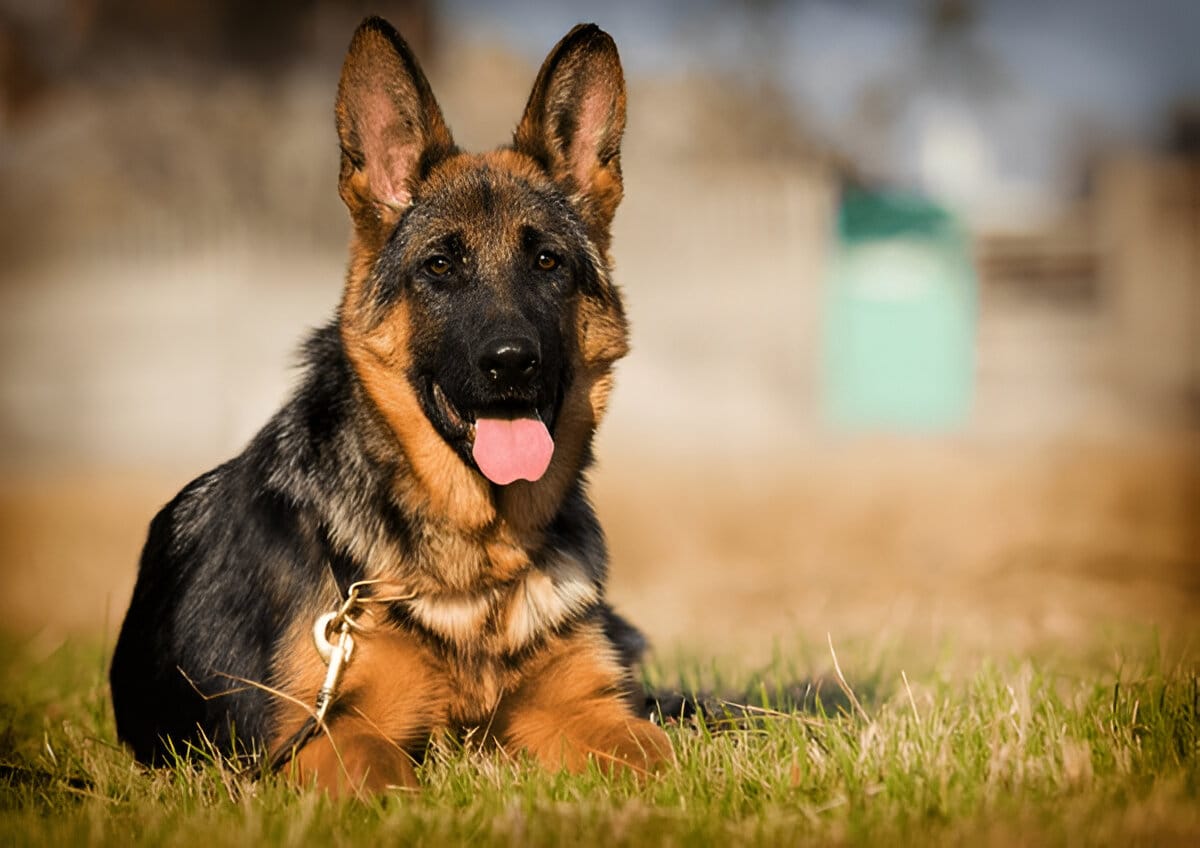
Photo credit: Shutterstock by Happy monkey
Common Health Problems
Responsible breeders consistently strive to maintain the highest breed standards carefully established by major kennel clubs like the American Kennel Club, ensuring that German shepherd dogs bred according to these rigorous guidelines are significantly less likely to inherit serious health conditions that can plague poorly bred lines – however, even with the best breeding practices, some hereditary problems can unfortunately still occur in this magnificent breed, so it’s essential that all owners 1 become thoroughly informed and be aware of the potential issues that might affect their beloved companions throughout their lives.
Through my years of working with this breed, I’ve seen how proper health screening and choosing reputable breeders can dramatically reduce the risk of common genetic problems, but vigilant owners should still monitor for signs of hip dysplasia, elbow dysplasia, degenerative myelopathy, bloat, and various eye conditions that can develop despite the most careful breeding programs.
Hip dysplasia:
This genetic orthopedic disorder affects the hip joints of many large-breed dogs, particularly German Shepherds, where it causes pain, limping, and degeneration of each affected joint. I’ve witnessed how this condition can transform a once-athletic companion into a dog struggling with simple daily activities, making early recognition absolutely crucial for every owner.
Elbow dysplasia:
This is another orthopedic problem that similar to hip dysplasia, but affects the dog’s front legs and often develops alongside hip issues in German Shepherds.
Elbow hygroma:
This alarming but non-cancerous growth swells over the dog’s elbow, filled with fluid and it’s usually caused by minor trauma. While unattractive, it typically doesn’t inflict discomfort on the canine unless the hygroma develops an infection.
Gastric dilatation-volvulus:
Also called bloat, this is a very serious condition that occurs when the dog’s stomach expands with gas or food and then flips within the abdominal cavity, cutting off exits and blood flow from the stomach, which can be fatal without prompt treatment.
Having witnessed this terrifying condition in my years with German Shepherds, I can tell you that recognizing the early signs of restlessness, unsuccessful attempts to vomit, and a distended abdomen can mean the difference between life and death for these deep-chested dogs who are particularly susceptible to this medical emergency.
Degenerative myelopathy:
This progressive neurological condition affects your dog’s spinal cord devastatingly. It starts with subtle weakness in the hind legs that owners often mistake for arthritis, but and sadly progresses relentlessly through stumbling and coordination loss, ultimately leading to complete paralysis of the hindquarters while leaving their minds completely intact.
Conclusion
The German Shepherd is a classic breed that can enrich the lives of loving owners and their families, but compliance with requests doesn’t always come easy – you must earn your GSD’s respect through understanding, like anything worth having. While they may instantly be loyal from the moment you bring them home, you will have to work for true cooperation on a daily basis through training sessions, mental stimulation, and building trust, but fortunately, with dedication, consistency, and positivity, their experience becomes an endearing journey where their incredible character and remarkable talent has made the GSD a top companion over a century of devoted service to families worldwide.


